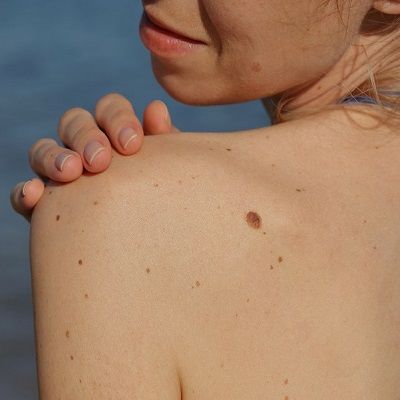
Why choose a Dynamic clinic?
- Highly Qualified doctors.
- Best dermatologist in F-7 Islamabad.
- Discounts and offers are available.
- Free parking.
- Use cutting-edge techniques.
- Available 24/7.
Tired of moles? Do they affect your appearance? Here’s a complete guide to the final answer.
Mole removal treatment is an easy, efficient technique to attain smooth, perfect skin while also addressing cosmetic and medical problems. Whether it’s a troublesome mole that undermines your confidence or one that requires medical treatment, sophisticated procedures such as laser therapy, surgical excision, or shaving assure safe and exact eradication. These procedures are fast, minimally invasive, and personalized to your specific skin requirements.
With competent care and adequate aftercare, you may expect a quick recovery and a visible increase in confidence. Say goodbye to ugly moles and welcome to smooth, glowing skin with our tried-and-true Mole Removal in Islamabad – Rawalpindi & Pakistan tailored to you!
What are moles?
Moles also called nevi (singular: nevus) is very common among both men and women. Some are since birth; others emerge later on in life when an individual grows. They are basically melanocytes (the pigment-producing cells of the body) that become concentrated in your skin. Some people have one mole, while others have more than one mole on their bodies.
Most moles are innocuous, but others can become cancerous and constitute a health concern if not removed. Skin cancer, particularly malignant melanoma, can be discovered by examining moles. If you see a mole growing in size, with uneven boundaries, or changing color, you should see your doctor.
Types of Moles:
Congenial Moles: | These are moles that are present at birth. Approximately one in every 100 persons is born with one or more moles. These moles vary in size, color, and form. Congenial moles that are deemed gigantic are larger than 20 cm and have been linked to an increased risk of developing melanoma. |
Atypical moles | also known as dysplastic nevi, are often bigger than average (above ¼ inch) and irregularly shaped. They may have irregular hues or colors that are not typical of moles. Atypical moles usually run in families and have the highest chance of turning into melanoma. |
Acquired Mole: | A mole that arises after birth. They are normally innocuous, although persons who have more than 50-100 moles are at a higher risk of melanoma |
Types of treatment available for removal of mole:
Type of technique | Details |
Laser mole removal | Laser treatments for mole removal are both non-invasive and accurate. High-energy laser beams degrade the pigment in the mole, gradually eliminating it over treatments. Advantages include minimal downtime, no scarring, and no discomfort. Ideal for: Small, non-cancerous moles. |
Surgical Excision: | This is the process of removing the mole and a little piece of the surrounding tissue. Benefits: It removes most big or suspicious moles. Suitable for raised or unusual moles. |
Cryotherapy: | This technique involves freezing the mole tissue and utilizing liquid nitrogen to eradicate it. Benefits: Simple and quick process. Best for: Small, superficial moles. |
Radiofrequency (RF) Ablation: | This innovative method uses radio waves to gently eradicate the mole, layer by layer. Benefits: Precise, less invasive, promotes rapid healing. Suitable for flat, harmless moles. |
How does the laser mole removal treatment work?
Laser mole removal works by focusing a concentrated beam of light onto the mole, breaking down the pigmented cells while leaving the surrounding skin unaffected. The laser light targets the melanin in the mole, gradually fading or eliminating it. The treatment is precise and regulated, providing a safe and effective method for removing undesirable moles.
Expected Results & Success Rate:
Fortunately, total mole removal may be accomplished in a single procedure. However, depending on the depth of the mole, it may take up to three sessions.
- For the first 3 – 7 days after treatment, you may suffer mild discomfort and redness.
- Facial moles heal in around 1 – 2 weeks,
- but body moles may take a little longer about 2 – 4 weeks.



Benefits:
- Long-term and obvious benefits.
- A painless and efficient therapy alternative.
- Suitable for all types of skin and people.
- Following the process, your skin will become softer and smoother.
- There are no significant negative effects or hazards.
- These mole removal techniques are affordable.
- Reduce the inflammation and pain caused by moles.
- Your confidence will be improved.
Who are the Right Candidates?
To be the right candidate, the criteria are listed below:
|
Preparation:
Before undergoing laser mole removal treatment, the dermatologist will prescribe you a few precautions for the prevention of any type of complications. Some common are mentioned below:
- Prescribed Lab test requires.
- Avoid picking scabs and instead allow them to heal naturally.
- Use sunscreen and clothes to protect the treated area from direct sunlight.
- Maintain a mild skincare routine and avoid excessive washing.
- Wait for the scab to break off before putting makeup (usually 10-14 days).
Procedure:
The procedure will be performed by our expert dermatologist and at the clinic. However, there are procedural steps that are mentioned below:
Numbing the area:
The dermatologist will apply numbing cream or local anesthesia to make the procedure less painful and less discomfort.
Laser application:
After that, the mole will be targeted by laser and the light will burst to break down the mole on the skin.
Cooling gel:
Then, the cooling gel may be applied as it may feel a little bit burnt on the targeted area. Also, a small bandage may be put up to cover it.
Time:
Therefore, the duration of the treatment will be 15 to 30 minutes depending on the number of moles. You can go home or to your work.
Aftercare Instructions:
It is necessary to take good care of the treated area after the treatment or otherwise, you may get complications. However, the dermatologist will prescribe you some aftercare instructions, such as:
- You can apply cooling gel if you feel irritation or burn.
- The treated area may appear as a scab.
- Apply Vaseline or the recommended product.
- Keep the area clean and dirt-free.
- Do not take blood thinners even after the treatment.
- Use antibiotics for the prevention of infection.
- If you feel any severe allergy then inform your dermatologist immediately.
Alternative Options Available:
There are other alternative options available and recommended according to the situation and suitability of the candidate. These are mentioned below:
- Extraction: If the person has a big mole or increases the size of the mole then it may require surgical operation where the mole will be extracted and stitches will apply.
- Liquid Nitrogen Application: During this non-invasive procedure, the dermatologist uses liquid nitrogen at extremely cold temperatures to freeze the surface of the moles and then remove them.
- Cauterization: This procedure of cauterization is mainly used by dermatologists to remove a patient’s mole or moles using heat.
- Hyfrecator Removal: By using an electric device that has a direct current (DC), the dermatologist heats up and permanently demolishes the unwanted skin tissues containing melanocytes or moles. It has a rapid recovery process and is a very safe process.
Cost of Laser Treatment at Dynamic Clinic:
Generally, the cost of Laser Mole Removal in Islamabad Pakistan ranges between 5,000 PKR per mole. Also, there are a few factors that can affect the cost of the treatment, such as:
- The Experienced Dermatologist’s fee.
- Location and Reputation of the clinic.
- Several moles and session requirements.
- Chosen method.
- Other supporting charges.
Laser | 15000 PKR to 17000 PKR |
Surgical excision | 13,000. PKR |
Cryotherapy | 500-3000 PKR |
Radiofrequency (RF) Ablation | 1200 to 3500 PKR |
Further, if you want to know more about cost-related queries then contact us or visit our clinic for more accurate information according to your concerns.
Possible Side effects:
- Minimal bruising.
- Swelling.
- Pain.
Recovery:
The recovery period for mole removal normally ranges from one to two weeks, depending on the treatment employed. Minor redness or scabbing may appear at this time. Any scar may take several weeks or months to fully heal and fade. Proper aftercare contributes to optimal healing.
Book an Appointment with us!
If you want to get this treatment for eliminating moles then feel free to consult Dynamic Clinic as we are offering a variety of treatments for removing moles. Fill in our online form below to avail a free consultation with our expert panel of Dermatologists regarding mole removal treatment and its options.










